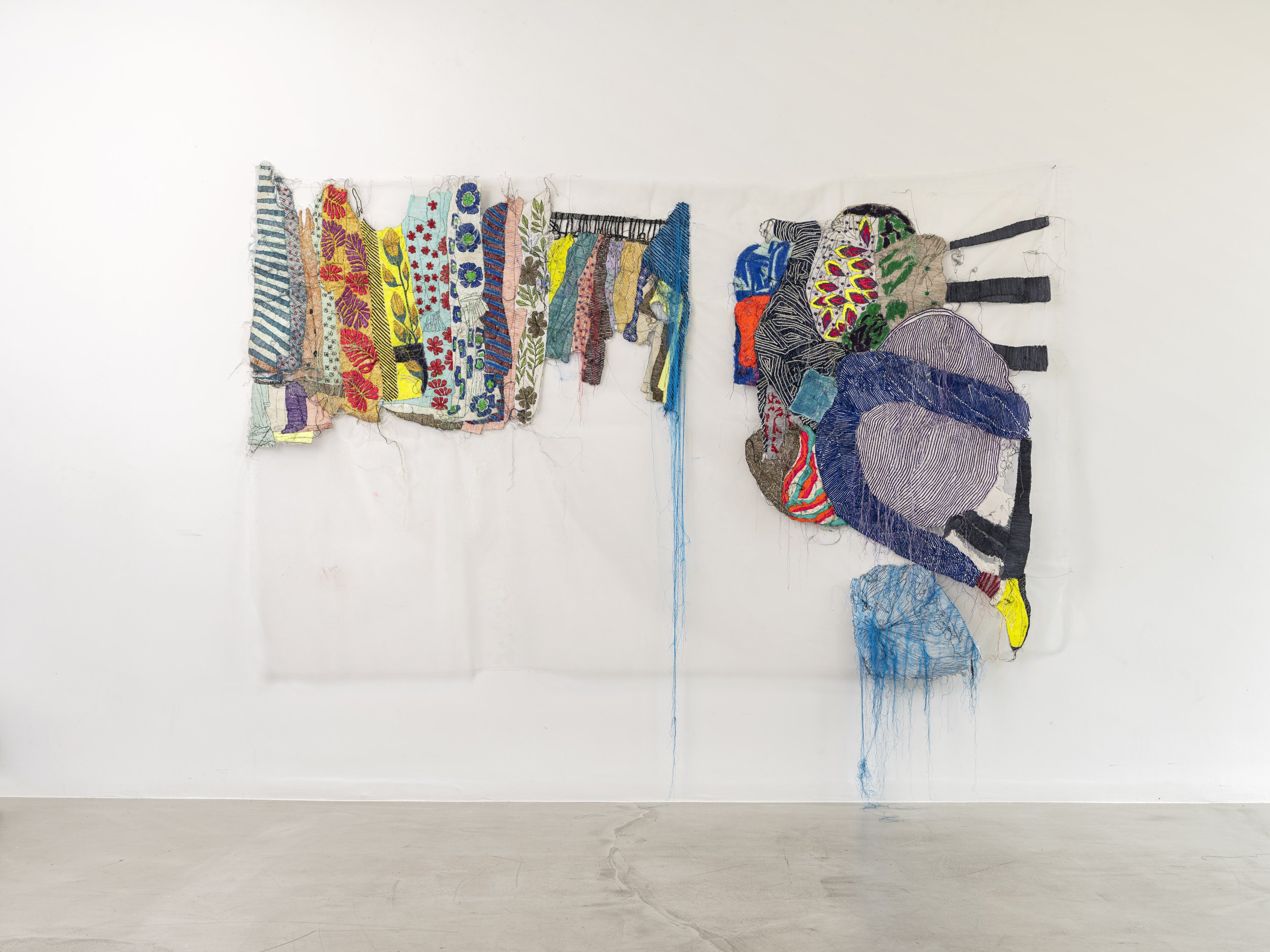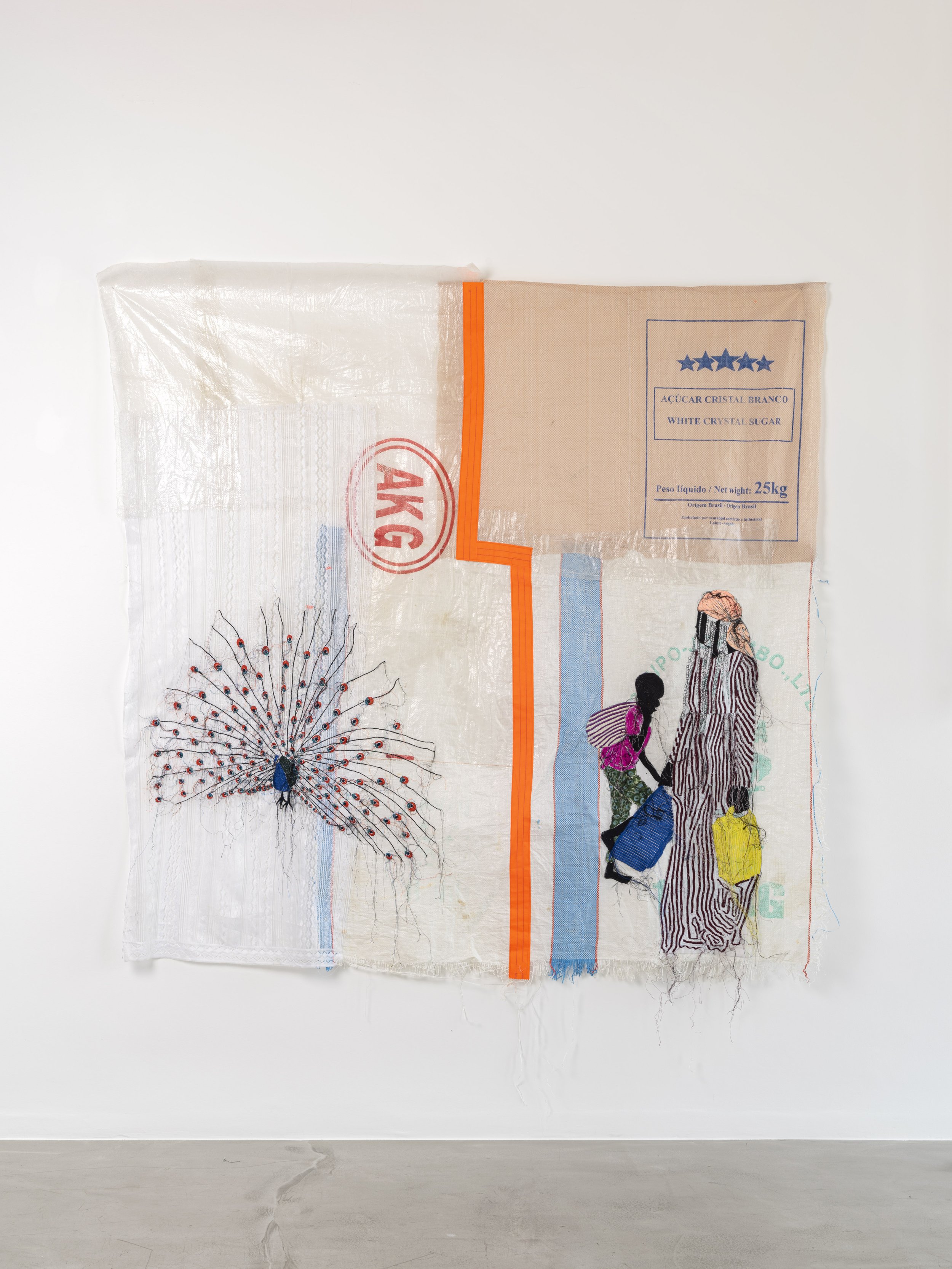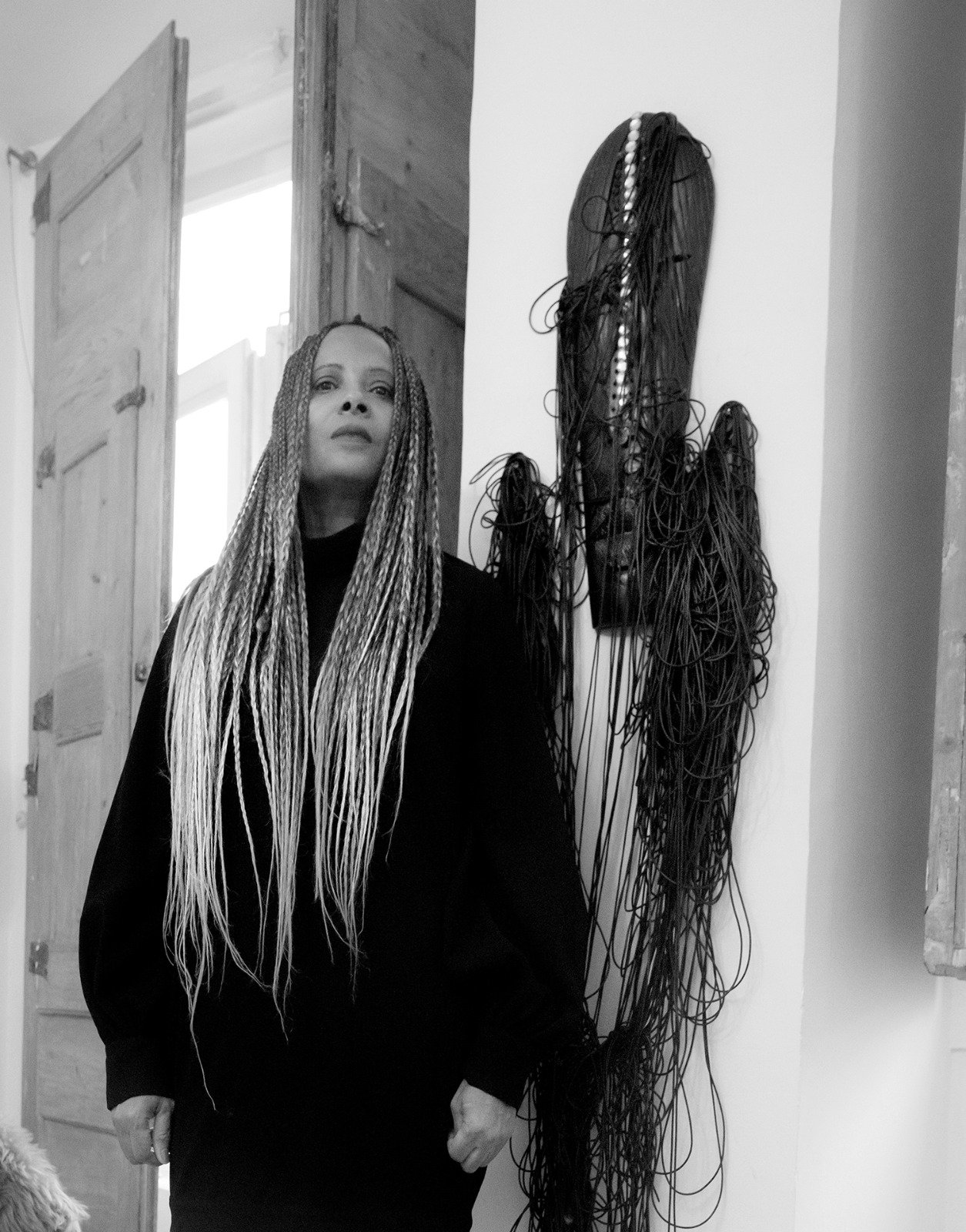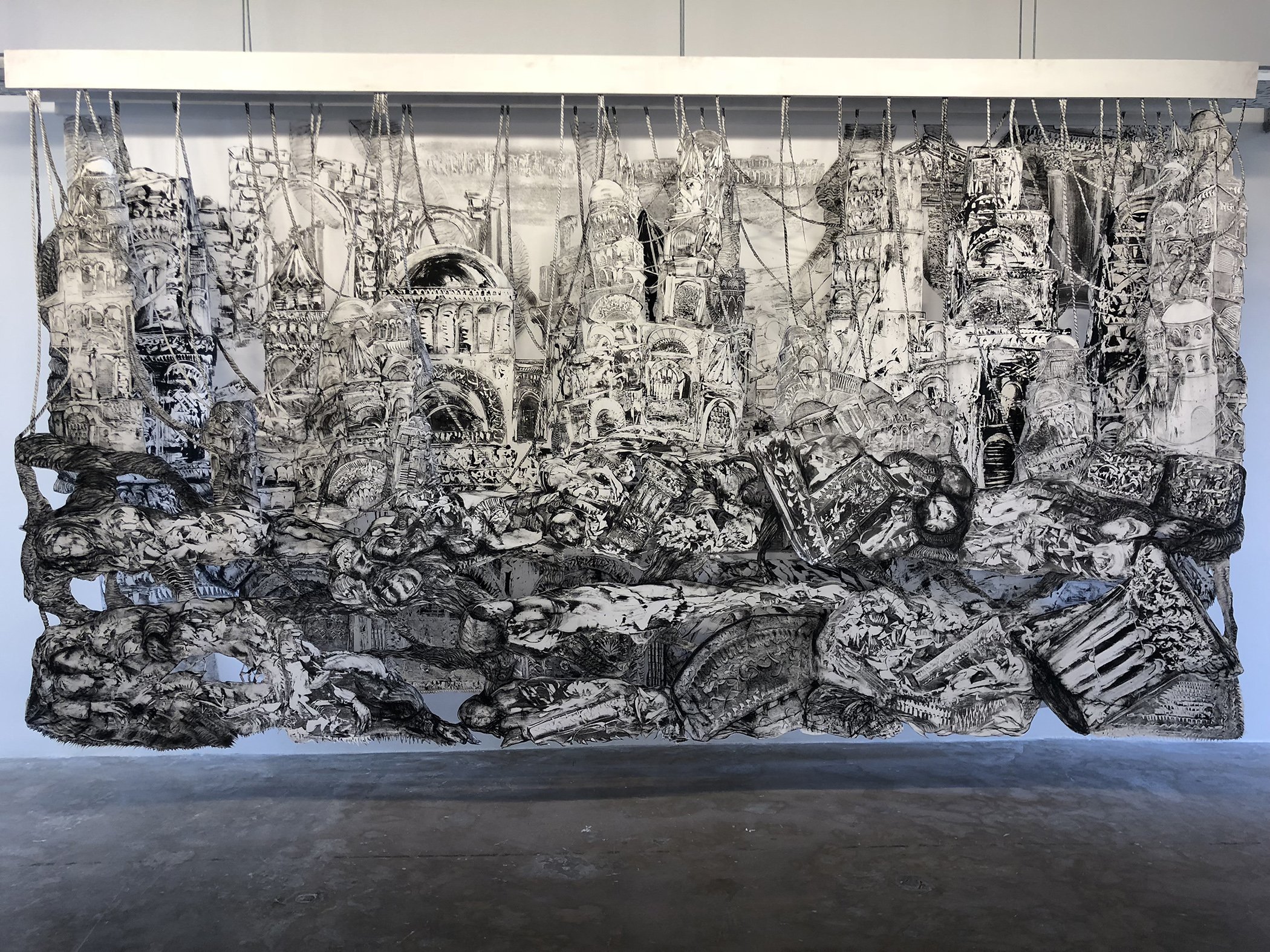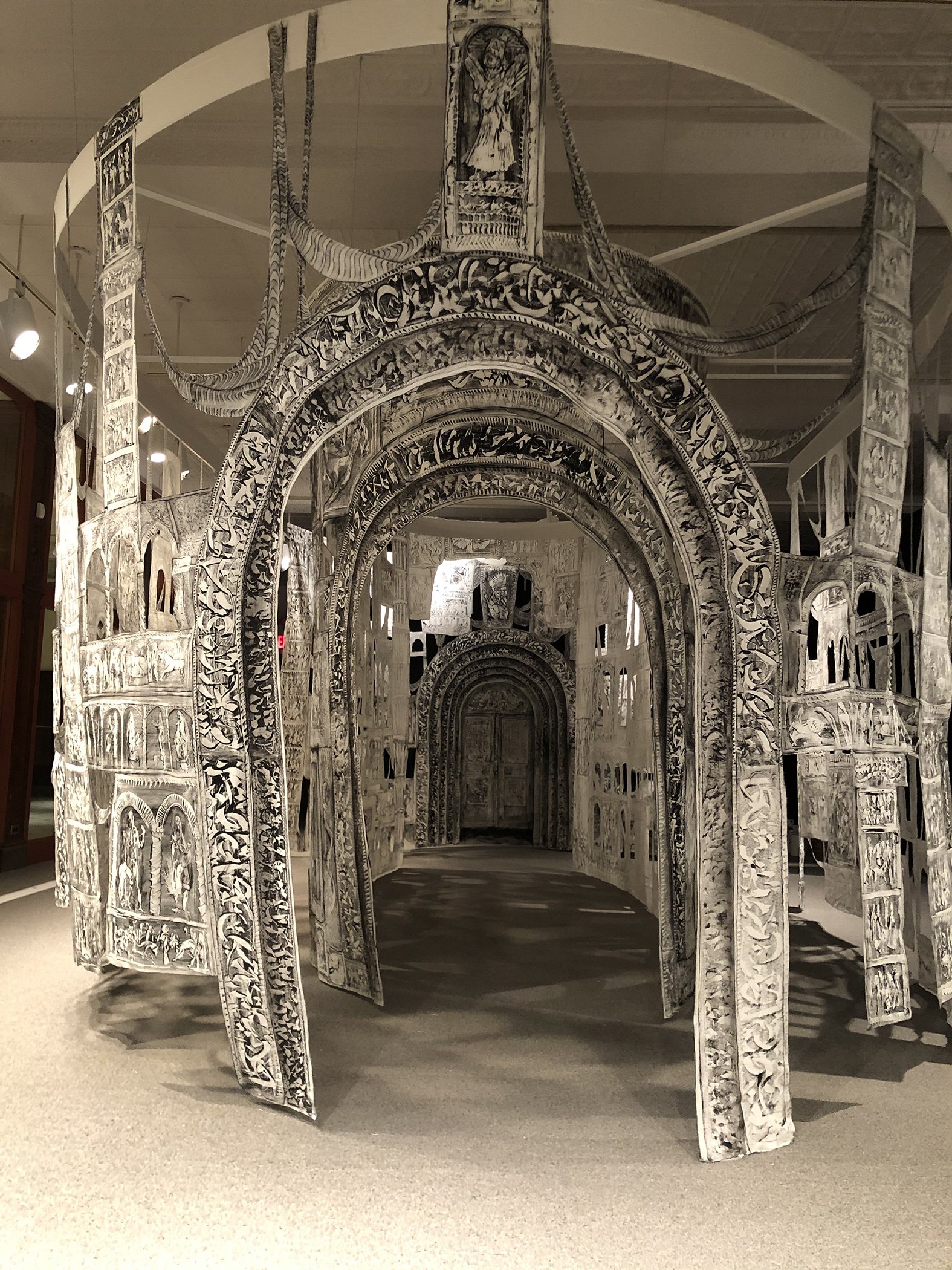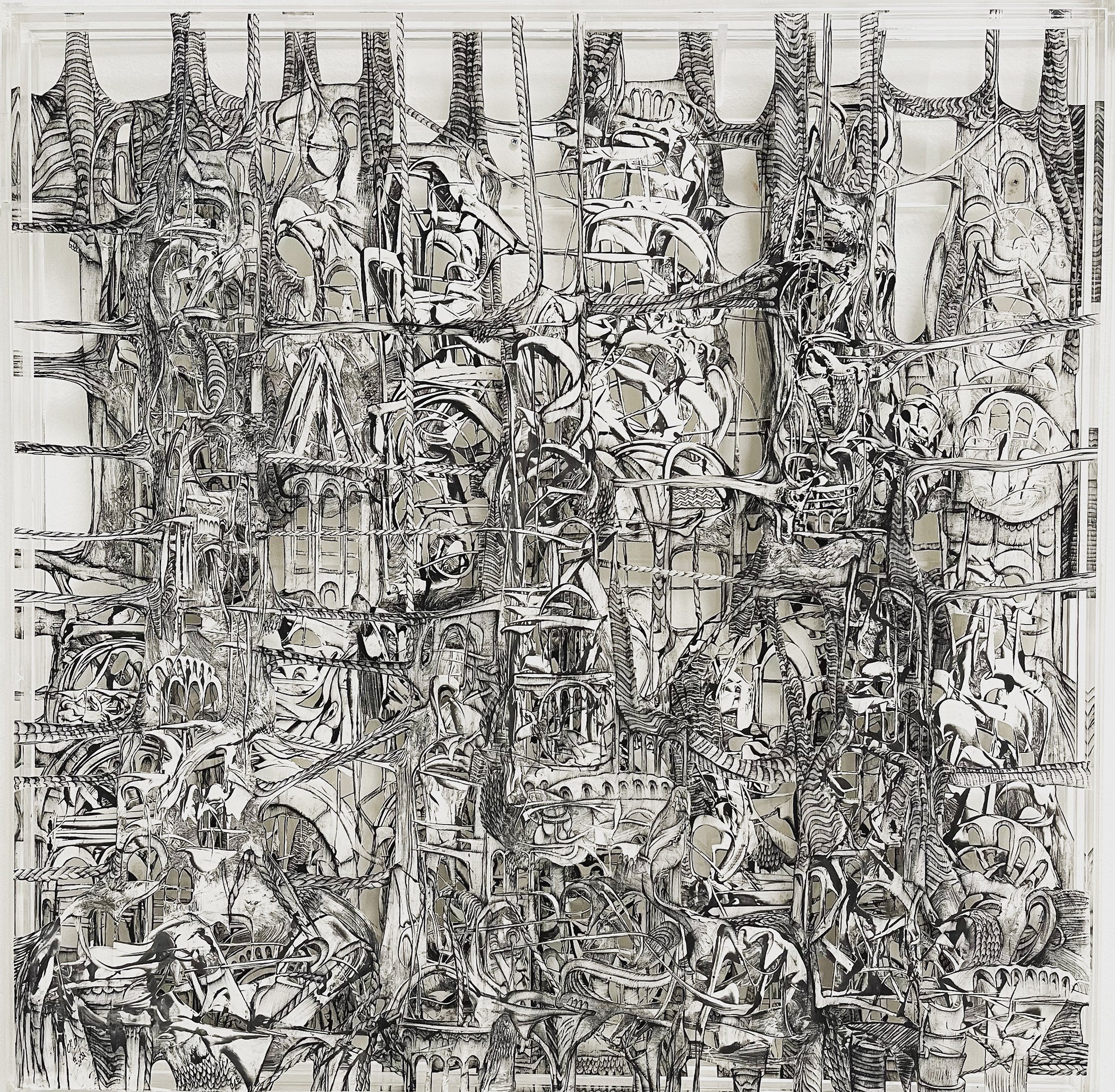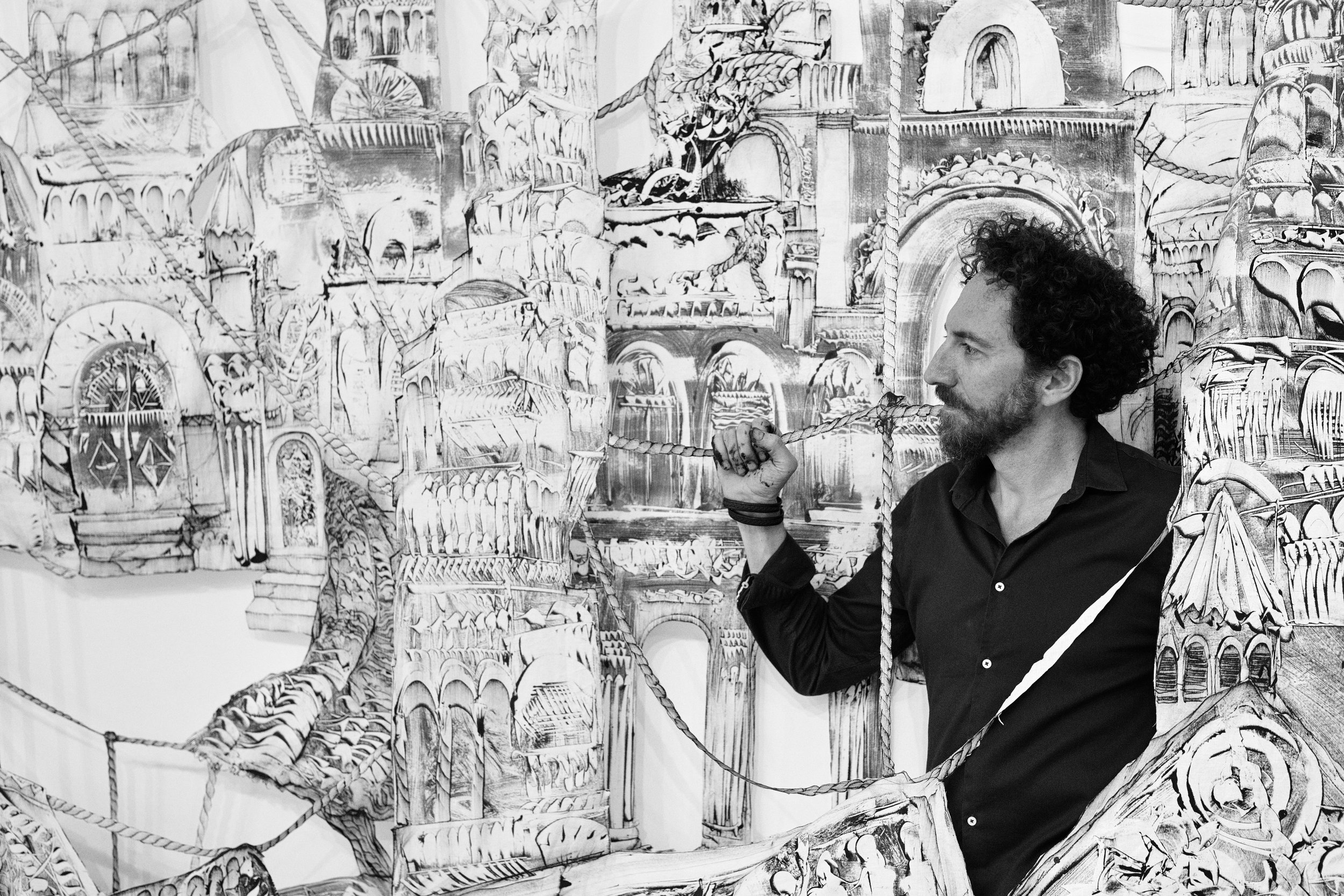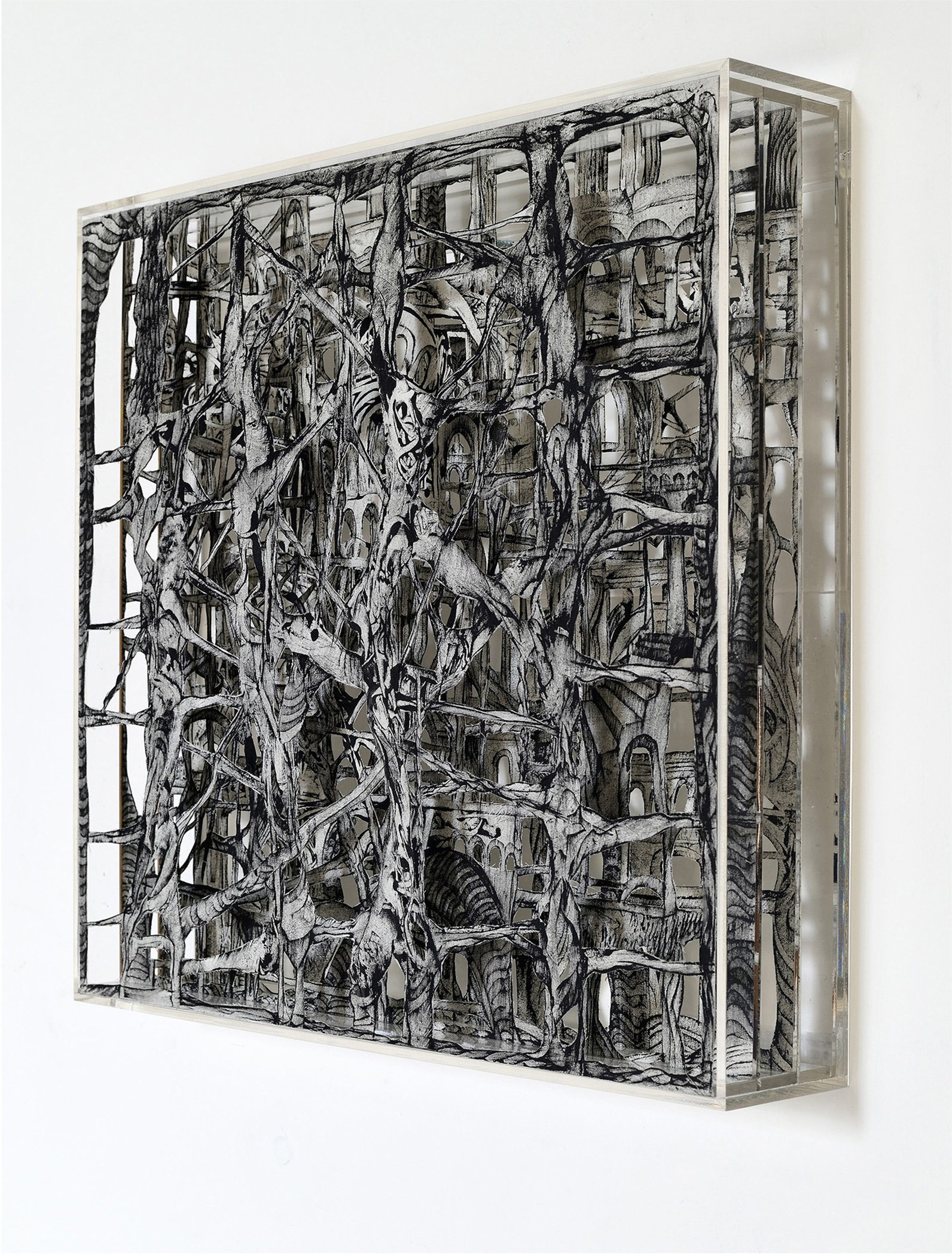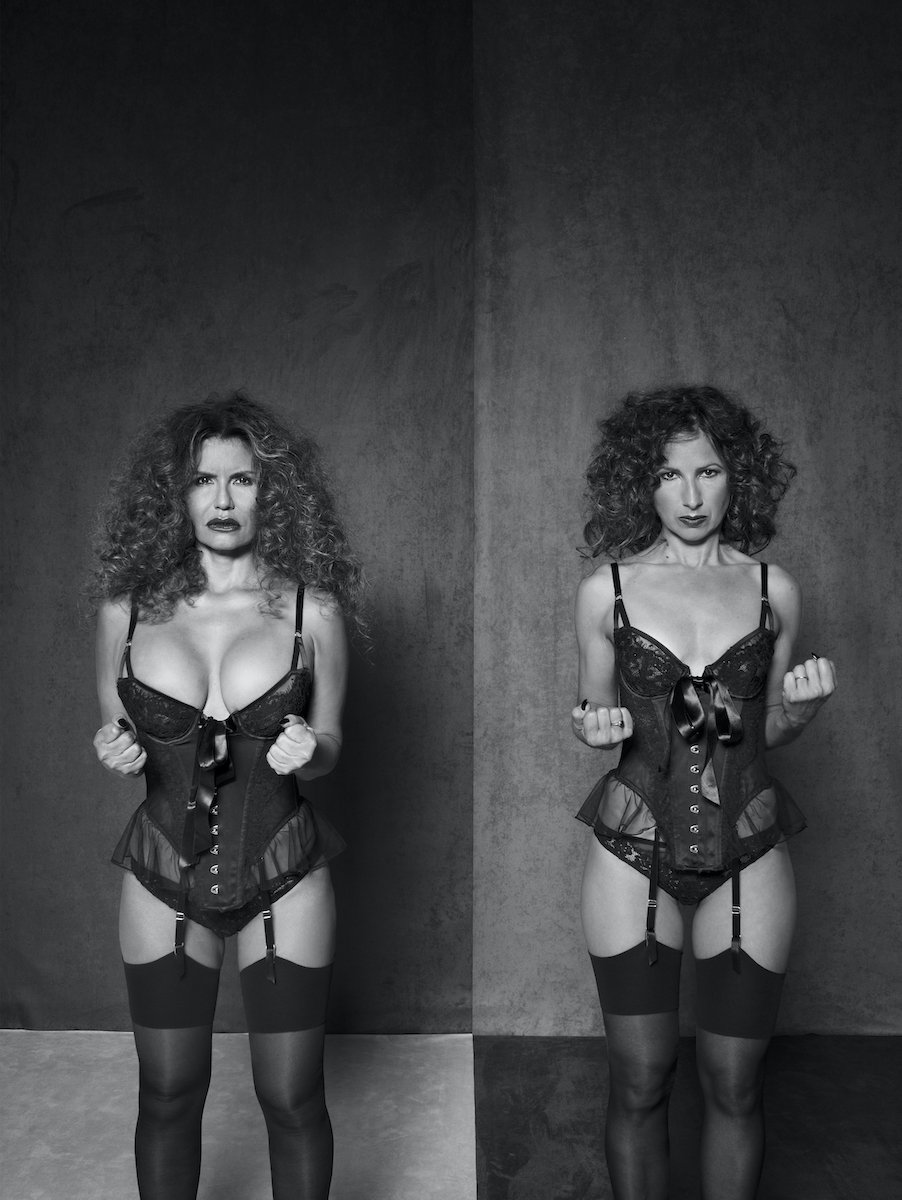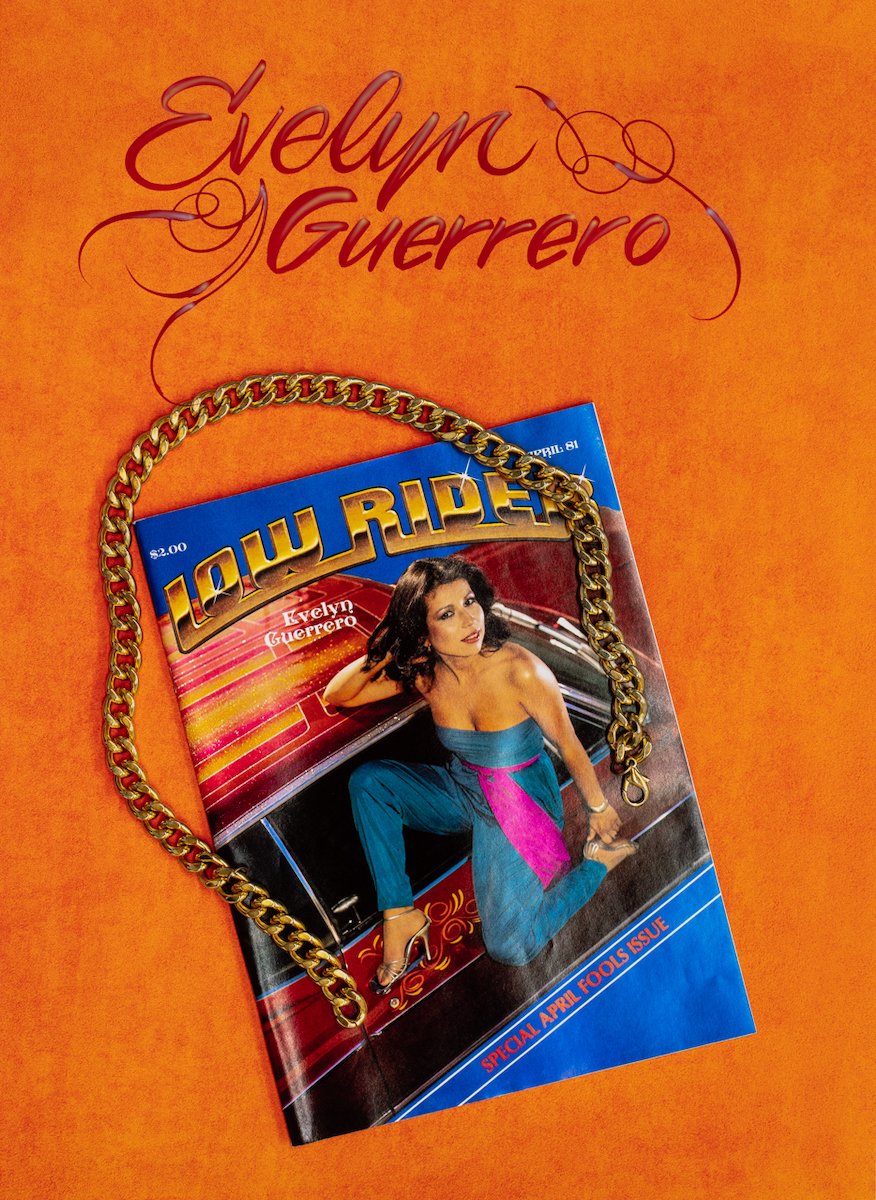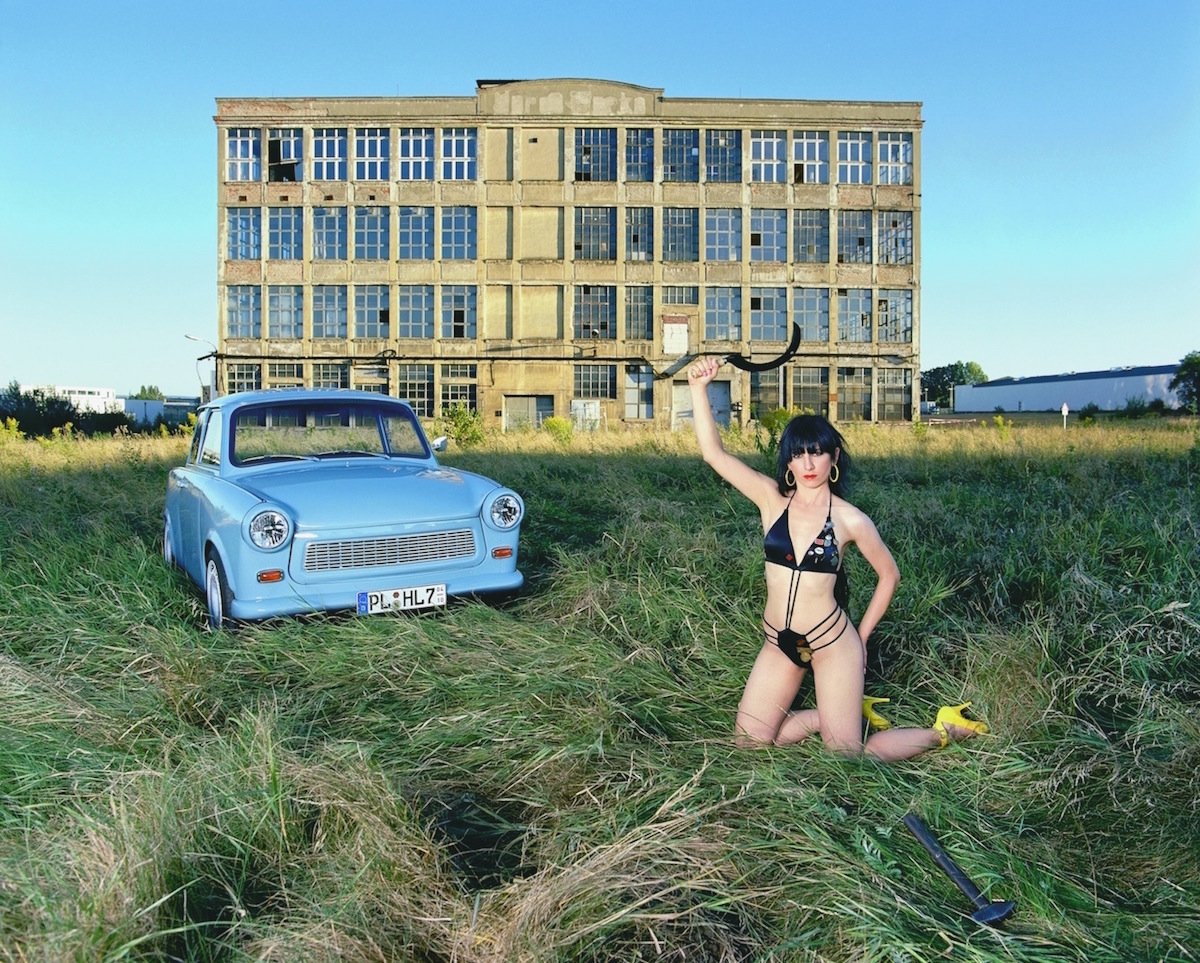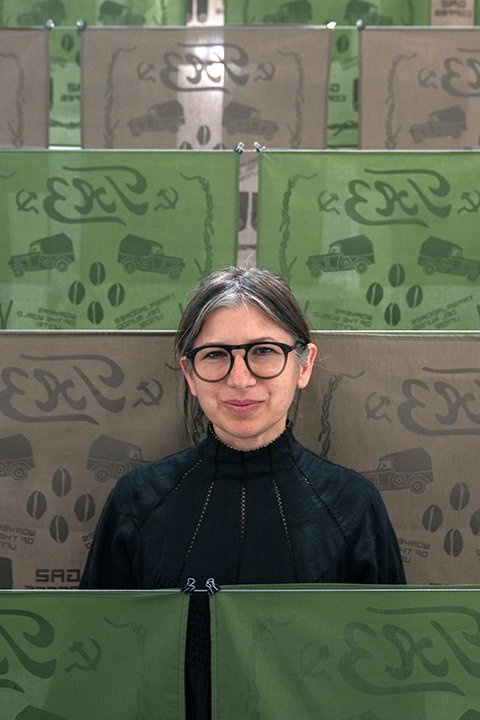March 2024: Meet the Artists
Ana Silva, Kevork Mourad and Liz Cohen
Ana Silva
Ana Silva's creativity is expressed by the plurality of her materials. Canvas, wood, metal, acrylic, or fabric are materials that surround her and the forms of her art. During her walks in the markets of Luanda, she distorts the primary use of raffia bags or other doilies into memory work, taking them from abandoned objects to relived objects: “I cannot separate my work from my experience in Angola, at a time when access to materials was difficult as a result of the war of independence and the civil war. My creativity was born from the exploration of my immediate environment. This experience had a major impact on my way of working, and my life more generally,” she said. From all her various techniques (painting, drawing, collage, oxidation of metal), she primarily sews together lace with African fabrics and colors.
Her work has been exhibited in numerous galleries such as Galeria Magnin-A, Matos Ferreira, Lisbon, and This is Not a White Cube, Luanda. In 2019, she gained international recognition when she was selected for the group exhibition Filam(a)nt at Blachere Foundation in Apt, France, along with El Anatsui; Kyle Meyer; Marion Boehm; Abdoulaye Konate; and Hassan Musa. She was selected as a 2019 artist-in-residence by AFRICANA Art Foundation project in New York City, 2020 artist-in-residence by the Musée d’Art Moderne de la Ville de Paris, and exhibited at the Embassy of Portugal in Angola. She lives and works between Portugal and Angola.
Kevork Mourad
Kevork Mourad deals with an art form in which a work is often a time-stamp, a moment chronologically fixed. In his layered pieces, when you look straight on, you experience one moment in time, but by shifting yourself a step and therefore shifting your perspective on the piece, you experience a different work, as if it were a different moment in a musical line. His work has been informed not only by the art and artifacts of his culture, but by the curving eastern melodies that have filled his ears. In the part of the world that most inspires his work—the part of the world that was Mesopotamia—time has not dealt kindly with artifacts. The descendant of Armenian refugees to Syria, both the Arabic and the Armenian cultures influence his work. Though his pieces are imaginary, they are highly informed by the crafts and art forms of his heritage—calligraphy, blacksmith work, ancient carvings—and he seeks to contribute to the idea of preserving historic artifacts through his work.
Kevork’s work has been exhibited at Studio La Cittá in Verona, Italy, at Kuchling Galerie in Berlin, Germany and at Galerie Tanit in Beirut, Lebanon. Kevork’s residency is a partnership with the Human Rights Foundation as part of its Art in Protest residency program. He is currently based in New York.
Liz Cohen
Liz Cohen is a photographer and performance artist whose decades-long career focuses largely on the intersections of immigration, industry, labor and women’s representation in popular media. Cohen is perhaps best known for her BODYWORK project, in which she simultaneously transformed a dilapidated East German Trabant into an American El Camino lowrider while inhabiting a new identity herself as a car customizer and bikini model. Through this immersive series, Cohen produced a profoundly influential body of work which challenges American cultural norms as they pertain to the eroticization of the automobile industry as well as the challenging role of women’s bodies in that space. Cohen’s most recent series, BODY MAGIC (2020), sees the artist further explore similar themes. In black and white photographs, Cohen poses with the iconic lowrider model Dazza Del Rio in images which make reference to Robert Mapplethorpe’s photographs of the bodybuilder Lisa Lyon.
The artist’s work is currently included in the landmark exhibition, With Eyes Opened: Cranbrook Academy of Art Since 1932, at the Cranbrook Art Museum, Bloomfield Hills (MI) until September, with an accompanying catalogue. In early 2021, Cohen was the subject of a survey retrospective, Body/Magic, at the Arizona State University Art Museum, Tempe (AZ).

